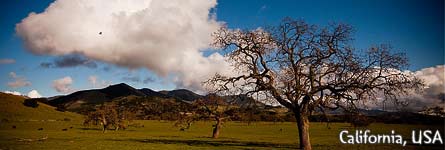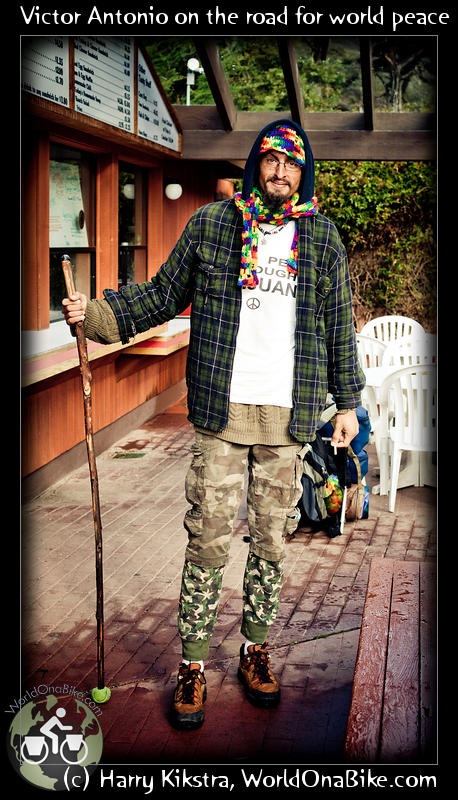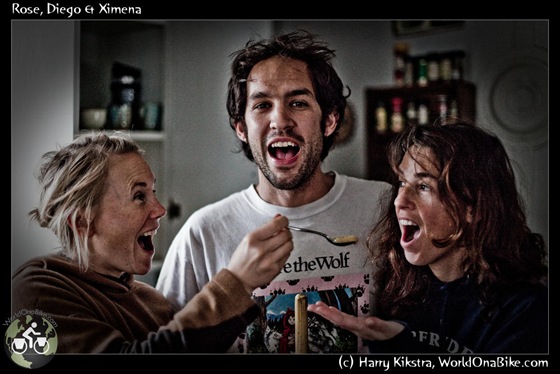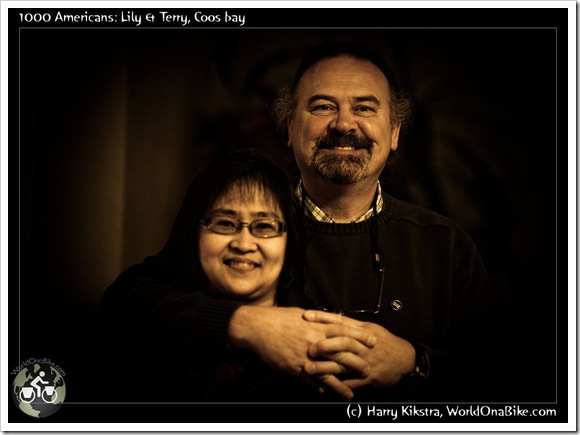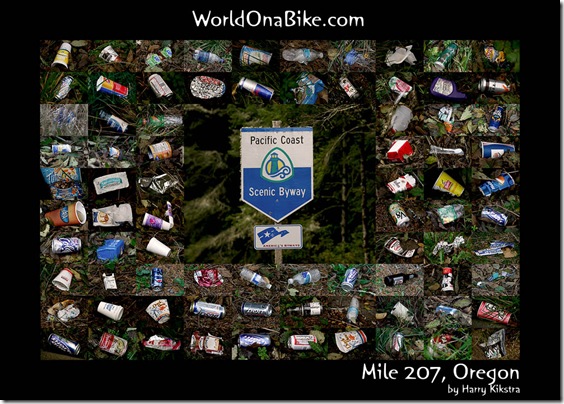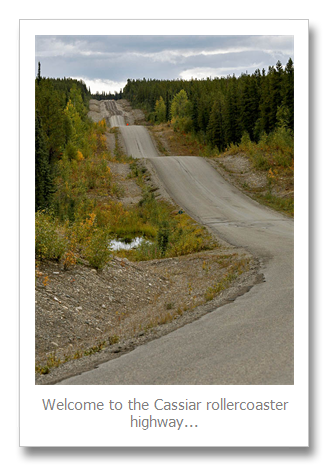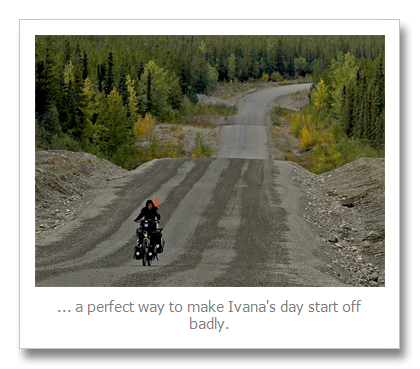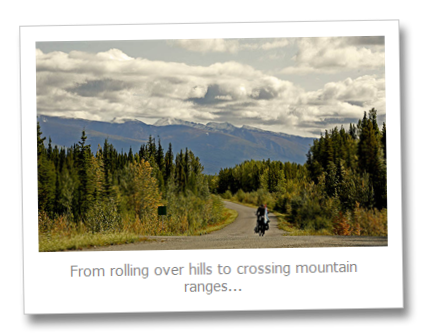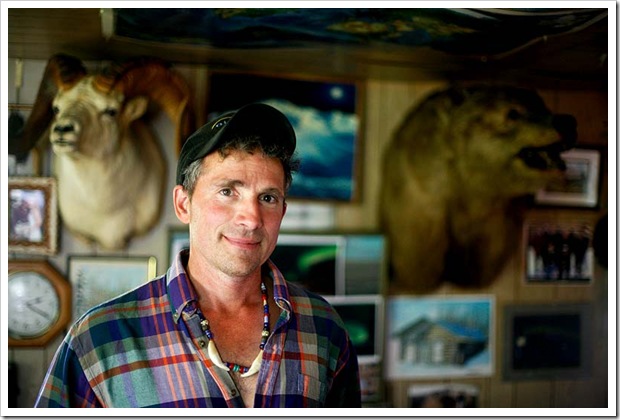1000 Americans: Victor Antonio, peacemaker
February 12, 2009 by Harry
Filed under 1000 Americans, Go green
Victor, originally from Puerto Rico, though he grew up in San Antonia, Texas, has been on the road for a while, walking to promote peace through Marijuana.
This is how he describes his mission, taken from his website http://HaveThisBook.com
I am a self employed long-distance walker/journalist.
With the Internet I have discovered a way to fight the world’s greatest problem. What would you say that is? Of all time. Where it all starts. Well, more like humanity’s greatest problem. The world can shake us off.
I say it’s ignorance. Ignorance is the root of all problems, if you ask me. Nobody listens. We’re not learning. We are stuck. The technology is here, the facts have been staring us in the face for decades . . . but we still insist on killing the world and ourselves because death makes money.
Why doesn’t anybody care?
Well, here is my idea.
With the Internet(and you’re going to think I’m crazy, just like I want you to) I plan to eliminate money, make everything free, prove that it’s human-nature to be generous and bring world peace.
I’m going to get rid of cars in big cities and make everybody healthy(and height/weight proportionate).
AND, not only will I get marijuana totally legalized and chill everybody out…I will get it recommended. It will be growing everywhere.
That’s the key.
I’ve got it all figured out.
I will tell you exactly how I plan to do all this . . . if you are willing to listen, and only then. I wouldn’t want to waste your time. I’ve got a website if you would rather read it. There is a lot to be said for the presentation, though.
Click on ASK ME HOW, on the left column at the top on http://HaveThisBook.com (if you want to).
“There are two ways of spreading light: To be the candle or the mirror that reflects it.” – Edith Wharton
1000 Americans: Rose, Diego & Ximena, Pacific Grove
February 8, 2009 by Harry
Filed under 1000 Americans, Go green
Rose, Diego & Ximena are housemates in Pacific Grove, adjacent to Monterey, California. All are active environmentalists, preferring the bike over a car and helping clean the beautiful coast of Monterey bay.
Diego has cycled across Europe and Asia, see his website http://superpedaletos.blogspot.com/ & Ximena has just succeeded in getting styrofoam containers banned in Monterey. It is small initiatives like these that slowly make the world greener, from the bottom up…
1000 Americans: Lily & Terry, Coos Bay
December 2, 2008 by Harry
Filed under 1000 Americans
Terry and Lily did not only offer us a warm and dry shelter as well as a wonderful meal, they also taught us a lot about a new way of building houses more ecologically. He showed us examples of Straw bale or Mud houses, ‘green’ houses and all the benefits that come with it (energy efficient, ecological, cheaper, stronger, personalized).
It was very nice to see his passion for the subject and definitely had made us think about any future house we might build…
Mile 207, Oregon Dunes National Recreation Area: a Trash Rant…
I am about to post several wonderful images of Oregon State, USA. A truly beautiful place. But first I have to get something else off my chest:
<rant> Imagine cycling along one of the most beautiful stretches of coastal nature in the US, maybe even in America. Dunes, forests, cliffs and rough waves. So nice they declared it a ‘National Recreation Area’!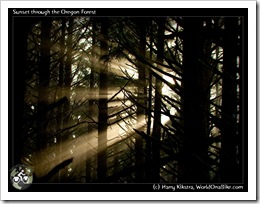
I enjoyed the scenery, but got more and more annoyed with the trash that was on the side of the road. It got so bad that I could not focus on the nature or even on the traffic, but just on the next piece of plastic that had been thrown out of a car window, or maybe I should say truck window?
Besides the ugliness of the trash, the chemicals that are slowly released into nature (by decomposing and by getting eaten by animals), it also creates dangerous situations for cyclists, as many times we have to go around heaps of glass or large pieces of trash, forcing me onto the car lane (assuming there is a shoulder to begin with).
At one point, at the bottom of a steep hill, I decided to take some photographs.
About one mile later, I had about 75 pictures of discarded trash, all taken within 45 minutes of uphill cycling (some more were shot after lunch, one hour later). Please take the following facts in account:
- I only started shooting after I got really annoyed by all the trash, so there were hundreds pieces more, just before this series.
- All first 75 shots were taken within 45 minutes; this includes cycling uphill, getting off the bike, releasing the flap of my handlebar-bag, getting the camera ready, taking a picture and getting moving again. Mostly I could do only a few pedal strokes before stopping again.
- Many pieces are missing. Only halfway up I started to shoot ‘doubles’, before, I passed items if I already had shot them. Missed Doubles (or triples) include red Bull, Coca Cola, Camel cigarettes, all Beers Of Idiots (see below) and more
- I did not shoot most unrecognizable and/or unbranded pieces of trash, such as random car parts, plastic wrappers of all kinds and sizes, unrecognizable glass items and much, much, much more…
- The road was steep on my side, the side of this trash, so likely a multitude of trash was to be found lower down the slope
- It was busy and there was no good shoulder, so I could not stop for every piece.
- Image #27 is the one in the middle: Scenic Byway… Besides this sign, there had also been a ‘Adopt-A-Highway sign before I started shooting.
- I only shot one side of the road.
Here is it: all the glory of Mile 207, Oregon (click image for larger version)
Conclusions:
Not all of the below are scientifically proven or valid, but it after cycling several thousand kilometers along the US highways, it is reasonable safe to assume that:
- There are hundreds pieces of trash per mile of US Highway, even though it is in a ‘National Recreation Area’
- Coors & Bud (especially light) are the choice of beer for trash-throwing idiots
- There is just as much ‘healthy’ trash (waters such as Dasani, Aquafina, ArrowHead (with ‘Eco-Shape bottle’!), V8, VitaminWater etc) as there is stuff that was already trash to begin with (KFC, McDonalds, Taco Bell, BurgerKing etc etc)
- Drive-thru coffee creates throw-away empty coffee trash.
- Adopt-a-Highway seems nothing more than a scam where local businesses get some advertising and never look at ‘their’ road again. There were some exceptions in the US (especially notably when the Adopter was a Bikeshop or Eco-market etc), but generally those signs only seemed to attract trash as the idiots throwing things out of their car, seem to need something to aim for..
I assume that the crazy fools that throw these things out of their car window (trust me, they are NOT cyclists…) have zero respect for nature also have no respect for others or even themselves, as they are messing up their own planet. Is is just education? lack of proper values taught by their parents? Or just plain stupidity? I really wonder what goes on in their minds if anything at all.
Some places have a sign that says: ‘$1000 fine for littering’. This means that if one person was stationed here, he could have raised at least $80,000 in fines (likely a multitude) on this one mile alone. I think that will cover his salary? How’s that for job creation?
< / rant>
Water: refill, not landfill please…
November 19, 2008 by Harry
Filed under Tips & Tricks, Go green
 When cycling down from Alaska, we often asked passing RV’s for some water. We noticed that most of the time, people were carrying trays and trays of small 0.5l (16oz) bottles of water, which we normally refused. It appears that not many people are realizing that:
When cycling down from Alaska, we often asked passing RV’s for some water. We noticed that most of the time, people were carrying trays and trays of small 0.5l (16oz) bottles of water, which we normally refused. It appears that not many people are realizing that:
- You need about 3 liters/ 96oz of water per day, this means 6 empty bottles per person, so a lot of trash
- They pay much more for their water than they should
- Though many say bottled water is ‘safer’, they have no idea if the water is better than that from their taps as ‘sourced’ water does not have to disclose the ingredients…
- ‘Recycling‘ is merely downcycling (see the excellent book ‘Cradle To Cradle’): the bottles are not reused, they are just used as a low quality source for other products that also cannot be recycled, so just a few steps away from being landfill where they will end up..
It has become a habit to buy and take bottles of water (‘hey, water is healthy, right?‘), promoted by the powerful marketing machines of Pepsico & Coca-Cola and the shallow promise of ‘recycling’.
I can tell you that I have been using the same 2 bottles: 1 PolarBottle & 1 1liter waterbottle all the way from Northern Alaska to California. That’s right: just refills, with pure, delicious water. No trash needed… Here is some information that might educate and even surprise you a bit. Most of it is also sponsored by commercial companies like Nalgene (refillable bottles) & Brita (waterfilters), but I rather support those companies that try to pevent more trash.
On the side of this post is a small set of images; all shot within 20 minutes, while cycling uphill, all empty waterbottles, thrown out of cars by ‘healthy’ people…
Facts
| In the United States in 2006, bottled water consumption reached a record 8.3 billion gallons, 185 million gallons of which was imported. The total amount spent on bottled water was over $11 billion. (Beverage Marketing Corp.) | ||
| In contrast to tap water, which is distributed through an energy-efficient infrastructure, transporting bottled water long distances involves burning massive quantities of fossil fuels. Nearly a quarter of all bottled water crosses national borders to reach consumers, transported by boat, train, and truck. (Earth Policy Institute) | ||
| It costs more money to drink bottled water than to put gas in your car–up to five time more–due mainly to its packaging and transportation.(Earth Policy Institute) | ||
| Bottled water companies do not have to release their water-testing results to the public, whereas municipalities do. (Natural Resources Defense Council) |
Links
- Container Recycling Institute
- Earth Policy Institute
- National Resources Defense Council
- U.S. Environmental Protection Agency
- Bottled Water Blues
- Local Drinking Water Information. How is Your Tap Water?
- www.drinktap.org
(from http://www.refillnotlandfill.org/facts.html)
Learn the Facts
(from http://www.filterforgood.com/learn_the_facts.php)
Why is bottled water waste a concern? Here are just a few reasons…
- Americans used 50 billion water bottles in 2006 and sent 38 billion water bottles to landfills, the equivalent of 912 million gallons of oil.1, 2, 3, 4
- If laid end to end, that’s enough bottles to travel from the Earth to the Moon and back 10 times.5 If placed in a landfill or littered, those bottles could take up to 1,000 years to biodegrade.2
- The energy we waste using bottled water would be enough to power 190,000 homes.6
- In 2006, the average American used 167 disposable water bottles, but only recycled 38.1
- Americans used about 50 billion plastic water bottles in 2006. However, the U.S.’s recycling rate for plastic is only 23 percent, which means 38 billion water bottles – more than $1 billion worth of plastic – are wasted each year.1
Ditching bottled water keeps Mother Earth and your wallet green.
- One Brita pitcher filter can effectively replace as much as 300 standard 16.9-ounce bottles. So you can get great-tasting water without so much waste. Talk about refreshing.
- The average Brita pitcher filters 240 gallons of water a year for about 19 cents a day.7 Put in perspective, to get the same amount of water from bottled water would require 1,818 16.9-ounce water bottles a year.8
- For about $10 each, you can purchase a 16-ounce or 32-ounce Nalgene bottle, saving you hundreds of dollars a year on bottled water.
- Hydration at its best – carry the water you need and reduce your impact on the environment – one Nalgene bottle can last for decades, making it easy to stop buying single-serve bottled water to fulfill your everyday hydration needs.
Many people drink bottled water because they believe it to be of a higher quality, cleaner and better-tasting, but that’s not necessarily true.
- In the United States, 24 percent of bottled water sold is either Pepsi’s Aquafina (13 percent of the market) or Coke’s Dasani (11 percent of the market). Both brands are bottled, purified municipal water.1
- If you don’t like the taste of your tap water, try Brita. Nine out of 10 consumers say “Brita clearly tastes better,” according to an in-home usage study. They preferred the taste of Brita water – filtered through pitchers – to tap.9
- Dr. Gina Solomon, a senior scientist at the Natural Resources Defense Council, an environmental advocacy group, told The New York Times that “there is no reason to believe that bottled water is safer than tap water.”10
- In the U.S., public water is regulated by the Environmental Protection Agency (EPA), which requires multiple daily tests for bacteria and makes results available to the public. The Food and Drug Administration, which regulates bottled water, only requires weekly testing and does not share its findings with the EPA or the public.10
Notes/sources:
1. Fishman, Charles. “Message in a Bottle.” Fast Company Magazine July 2007: 110.
2. Arnold, Emily, and Janet Larsen. ” Bottled Water: Pouring Resources Down the Drain.” Earth Policy Institute. 2 Feb. 2006. 28 June 2007.
3. Larsen, Janet. “Bottled Water Boycotts:Back-to-the-Tap Movement Gains Momentum.” Earth policy Institute. 7 Dec. 2007.
4. One oil barrel = 42 gallons (Energy Policy & Planning Office, Ministry of Energy, Thailand)
5. The average 16.9-ounce bottle of water is 8 inches, or .67 feet, tall, meaning 38 billion bottles would cover 25,333,333,333.33 feet, or 4,797,979.80 miles. The distance from the Earth to the Moon is 238,987 miles, so 38 billion bottles could travel from the Earth to the Moon and back more than 10 times.
6. “Not Disposable Anymore.” P.O.V.’s Borders. 2004. PBS.
7. This cost assumes the purchase of a $25 pitcher (one filter included), plus 5 replacement filters at $9 each, for a total yearly cost of $70, or $0.19 cents a day.
8. Each filter produces 40 gallons of water and the average Brita owner uses 6 filters in a year, to produce 240 gallons, or 30,720 ounces, of fresh-filtered water. 30,720 ounces is equivalent to the water found in 1,818 16.9-ounce water bottles.
9. Brita Pitcher System In-Home-Use-Test compared to tap water. 2005
10. Burros, Marian. “Fighting the Tide, a Few Restaurants Tilt to Tap Water.” The New York Times [New York City, NY] 30 May 2007: Section F, Page 1.
Day 53-62: 2-11 Sep 2008: The Cassiar Highway: a wonderful wilderness with hills, gravel, jade, wildlife… and people
September 12, 2008 by Harry
Filed under Trip reports, Friendly people, North America, Canada, British Columbia
Of course we took the road less travelled 🙂 Highway 37, The Stewart Cassiar Highway, or simply The Cassiar Highway. All names for this infamous road, almost 1000km long, known for the lack of services, bad weather, bears and gravel patches. The latter issue had been solved we had been promised, but the other?
2nd September: Nugget City – French Creek, 58km
The adventure started sunny, but dark clouds appeared, especially on Ivana’s face when she noticed the first set of hills. “is this going to be like that for the rest of the road?” she asked. I truly did not know, but suspected that this was just the beginning…
Fortunately some nice people made our day by donating a full bag of cut-up watermelon, just what the doctor ordered as the sun had come out. Unfortunately the wind had come to and after a week of tailwind, we were not happy to have it in our face again, slowing us down.
Ivana spotted a black bear, right beside the road, I must have raced right past him on the downhill. At least that made her a bit happier and when we also found a nice deserted rest area called French Creek where we -after hanging our foodbags in the trees- could relax near a good campfire.
1000 Americans: Jack Reakoff, Wiseman, Alaska. About oil drilling in Alaska.
August 15, 2008 by Harry
Filed under 1000 Americans, Friendly people, Go green
‘I have been living in Wiseman since 1971, when I was 13. I have to go to Fairbanks to get supplies every 3-4 months, but hate it.’
Jack Reakoff is one of Wiseman’s famous faces and voices. he seems to know a lot about a lot and works part-time as a tourguide, showing busloads of tourists around Wiseman and telling all about its history. Whenever there is a radio discussion about a current topic, Jack calls in and he has been featured in books, videos and guides. he sells fur from animals he hunts and traps and beads to make necklaces and jewelry.
He has a clear opinion about the oil industry and the thoughts behind the pressure to start drilling in the last remaining wilderness in the arctic:
‘It’s all political. Due to new drilling methods there is actually more oil in the North Slope available than there was when they started drilling a few decades ago. But they have to lower the output, which serves them for several reasons: firstly, the pipeline will not break. It is old and corrosion has lowered the maximum pressure that can go through. Read more
Day 1: 12 July 2008: Prudhoe Bay to Mile 383
July 13, 2008 by Harry
Filed under Trip reports, North America, Alaska
You lose all sense of time when it doesn’t get darker at night. The sun doesn’t set at 70 degrees North, but just circles around you like a vulture above a fresh kill. As we do not have watches, only our cycle computers and Lenny could tell us what time it was. The other cyclists were buys packing as they were on the 08.00 tour, but as our tour only started 6 hours later, we enjoyed the extra hours to relax for the first time in weeks.
When we finally headed over to the Caribou Inn, they had already finished and were preparing for their trip. As a biketraveller, you have to take care with your money, as you never know where you might need it. That is why we were hesitant to attack the $18 lunch buffet that the cyclists had raved about. Once we took our group picture outside and said goodbye to the others, we had made up our mind to feast; but we were too late as lunch was over.
Only then we found the hidden secret of the Caribou Inn: the packed lunch. For $10 you could take a quite large paper bag and fill it with whatever you like. I am sure they had no idea how many salmonburgers, hamburgers, ham/cheese & salami sandwiches, chocolate cake, yogurt, fruit juice and potato salad a pair of cyclists could fit in just one bag 🙂 Read more
Water & Toothpaste
… I think they do not mix, at least not voluntarily. So who came up with the idea to hold your toothbrush under the running tab for a while and then sticking it in your mouth while the water keeps on flowing?
That makes absolutely no sense. Water does not ‘stick’ to the toothpaste, or at least not in any noticeable amount. So, let’s just make it easier for ourselves: if we do not open the tap before we are finished brushing, we also do not have to remember closing it… better for everybody, as 2 minutes (recommended brushing time) of useless flowing water is a lot of clean drinking water wasted.


